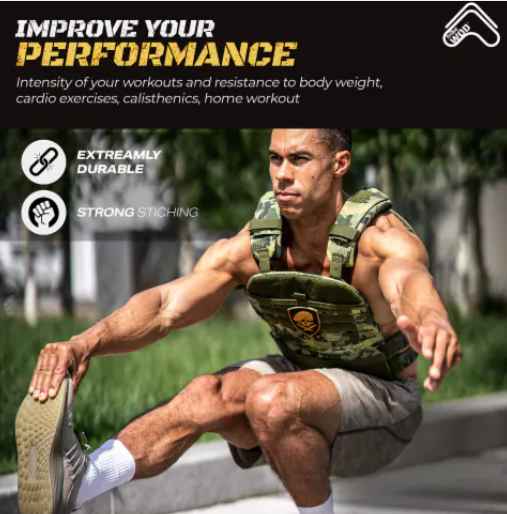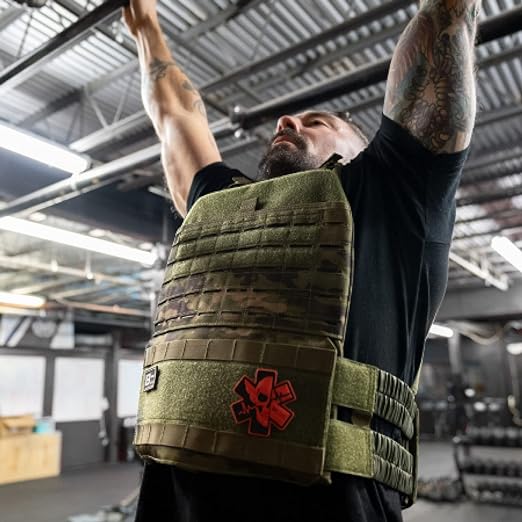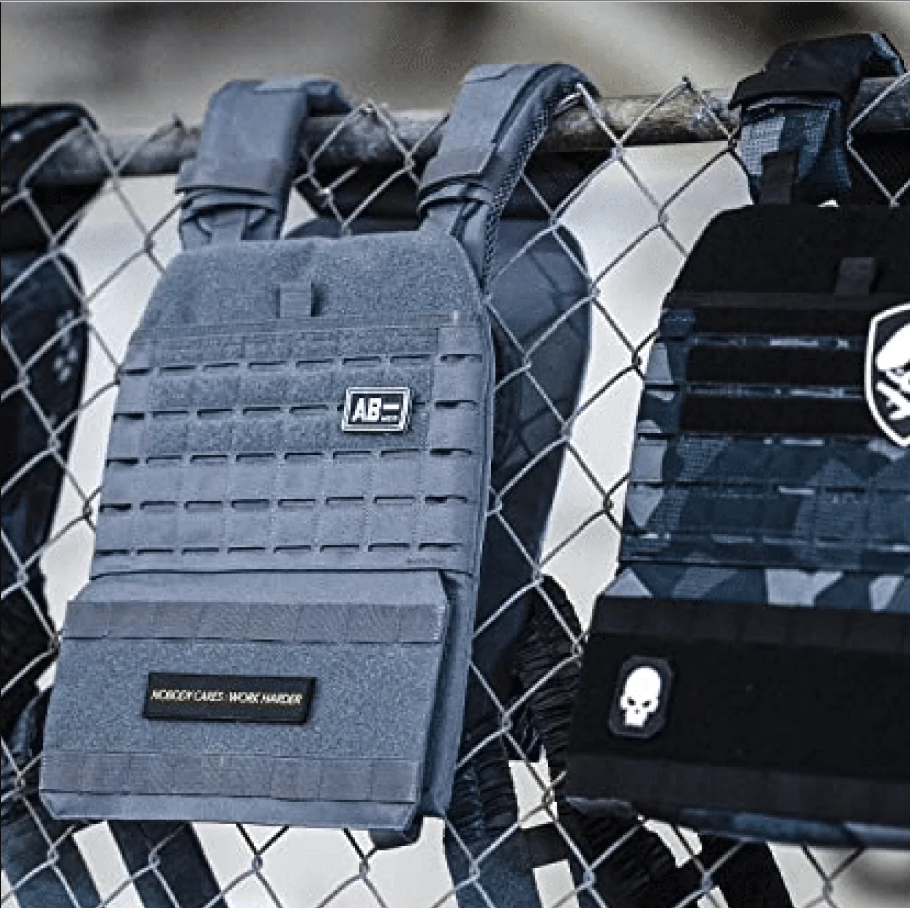In the pursuit of improving physical fitness and athletic performance, individuals often seek out various methods to enhance strength and endurance. One such method gaining popularity is the use of weighted vests. These vests, worn snugly against the torso, are designed to add resistance to workouts, potentially amplifying the benefits of exercises aimed at leg strengthening. But do weighted vests truly deliver on their promise? In this article, we delve into the science behind weighted vests and their impact on leg strengthening.
Understanding Leg Strengthening
Before delving into the effectiveness of weighted vests, it's crucial to understand how leg strengthening occurs. Leg muscles, including the quadriceps, hamstrings, calves, and glutes, play a vital role in supporting the body and facilitating movement. Exercises such as squats, lunges, and leg presses target these muscles, stimulating muscle growth and enhancing strength over time.
Weighted vests offer a unique opportunity to increase the resistance during these exercises, thereby amplifying the muscle activation and promoting greater gains in leg strength and power. By incorporating weighted vest training into leg-focused workouts, athletes can effectively challenge their lower body muscles, leading to improved performance and functional fitness in various activities.
The Role of Resistance Training
Resistance training, which involves challenging muscles with external resistance, is a cornerstone of leg strengthening routines. By increasing resistance, either through weights, resistance bands, or bodyweight, individuals can effectively stimulate muscle growth and improve strength. Weighted vests offer a convenient way to incorporate additional resistance into leg workouts, potentially yielding greater gains in strength and muscle mass.
Weighted vests have gained popularity among fitness enthusiasts and athletes as a tool to enhance various aspects of physical performance. Among the benefits claimed, one of the prominent areas of interest is their potential to strengthen leg muscles. This article aims to delve into the science behind the use of weighted vests for leg strengthening, supported by studies and research from reputable sources.
A study published in the Journal of Strength and Conditioning Research by Harman et al. (2000) examined the effects of weighted vests on lower body power and strength. The researchers found that participants who incorporated weighted vests into their training showed significant improvements in leg strength compared to those who did not.
Understanding Weighted Vests
Weighted vests are garments designed to add extra weight to the body during physical activities. Typically, they contain pockets or compartments where weighted inserts can be added or removed to adjust the load according to the user's preference and fitness level. When worn during exercises, weighted vests increase the intensity of the workout by adding resistance, which can lead to greater muscle engagement and strength gains.
Muscles Targeted in Leg Strengthening
Using weighted vests can effectively engage various muscles in the legs, including:
Located at the front of the thigh, the quadriceps muscles are responsible for knee extension. Exercises such as squats, lunges, and step-ups with weighted vests can specifically target and strengthen the quadriceps.Situated at the back of the thigh, the hamstrings play a crucial role in knee flexion and hip extension. Activities like deadlifts and leg curls performed with weighted vests can engage and strengthen the hamstrings.
The gluteal muscles, comprising the gluteus maximus, medius, and minimus, are essential for hip extension, abduction, and external rotation. Exercises such as squats, lunges, and hip thrusts with weighted vests can effectively target the glutes, leading to improved strength and stability.
The calf muscles, including the gastrocnemius and soleus, are located in the lower leg and are responsible for ankle plantar flexion. Activities like calf raises with weighted vests can help strengthen the calf muscles, enhancing ankle stability and lower leg strength.
Another study by Suchomel et al. (2016), published in the Journal of Strength and Conditioning Research, investigated the biomechanical effects of wearing weighted vests during squat exercises. The results indicated that using weighted vests led to greater muscle activation in the quadriceps, hamstrings, and glutes, suggesting enhanced leg strengthening benefits.
Furthermore, a meta-analysis conducted by Haddock et al. (2019) and published in Sports Medicine reviewed multiple studies on the effects of external loading, including weighted vests, on lower body strength. The meta-analysis concluded that incorporating external resistance, such as weighted vests, in resistance training programs can lead to significant improvements in leg strength and muscle hypertrophy.
Exercises for Leg Strengthening with Weighted Vests
Squats
Squats are fundamental compound exercises targeting multiple muscle groups, making them ideal for leg strengthening with weighted vests. Proper form is essential to prevent injury and maximize benefits.
How to do it
- Stand with feet shoulder-width apart,
- Engage core muscles, lower hips until thighs are parallel to the ground,
- Then return to standing position keeping back straight throughout the movement.
Benefits
- Engages quadriceps, hamstrings, glutes, and calves effectively.
- Enhances lower body strength, stability, and overall functional movement.
- Supports better posture and joint health when performed correctly.
- Boosts metabolism and aids in fat loss due to its high energy expenditure.
Lunges
Lunges are unilateral exercises that target each leg individually, promoting balance and strength. Adding weighted vests intensifies the challenge, leading to greater muscle engagement and development.
How to do Lunges
- Begin by standing tall,
- Take a step forward with one leg, lower hips until both knees are bent at 90 degrees angles, then push back up to the starting position.
- Alternate legs for repetitions.
Benefits
- Targets quadriceps, hamstrings, glutes, and calves, enhancing lower body symmetry.
- Improves balance, coordination, and stability, reducing injury risk in daily activities.
- Develops unilateral strength, addressing muscle imbalances and enhancing functional movement.
- Increases hip flexibility and range of motion, contributing to better overall mobility.
Step-Ups
Step-ups mimic everyday movements like climbing stairs, making them highly functional for leg strengthening. Incorporating weighted vests adds resistance, amplifying the workout's effectiveness.
How to do it
- Stand facing a sturdy bench or step,
- Place one foot onto the step.
- Push through the heel to lift the body up, then lower back down with control.
- Repeat on both sides.
Benefits
- Targets quadriceps, hamstrings, glutes, and calves, with a particular focus on the stabilising muscles.
- Enhances lower body power, aiding in activities such as running, jumping, and agility sports.
- Improves balance and proprioception, essential for preventing falls, especially in older adults.
- Provides a scalable exercise option suitable for various fitness levels and goals.
Calf Raises
Calf raises isolate and strengthen the muscles of the calf, crucial for stability and propulsion during walking and running. Utilizing weighted vests adds resistance to challenge these muscles further.
How to do it
- Stand with feet hip-width apart
- Lift heels off the ground as high as possible, then lower back down slowly.
- For added intensity, perform on a step or ledge, allowing heels to dip below the level of the toes before rising up.
Benefits
- Targets the gastrocnemius and soleus muscles of the calves, promoting definition and strength.
- Enhances ankle stability and mobility, reducing the risk of sprains and strains.
- Improves athletic performance in activities requiring explosive push-off, such as sprinting and jumping.
- Alleviates tightness and discomfort in the calf muscles, promoting overall lower body comfort and function.
Benefits of Weighted Vests for Leg Strengthening
Increased Intensity
- By adding weight to the torso, weighted vests increase the intensity of leg exercises, forcing muscles to work harder to overcome the added resistance. This heightened intensity can lead to greater muscle activation and recruitment, promoting strength gains.
Functional Strength Development
- Weighted vest exercises often mimic real-life movements, such as walking, running, and climbing stairs, making them conducive to developing functional leg strength. This translates to improved performance in daily activities and sports.
Progressive Overload
- Progressive overload, the gradual increase in resistance over time, is essential for muscle growth and strength development. Weighted vests allow for easy progression by enabling users to incrementally increase the weight as their strength improves, ensuring continued gains.
Enhanced Balance and Stability
- Wearing a weighted vest can challenge balance and stability, as the body adapts to the additional load. This can lead to improved proprioception and coordination, further enhancing overall leg strength and athleticism.
Considerations and Precautions
While weighted vests offer numerous benefits for leg strengthening, it's essential to approach their use with caution and consideration.
Proper Form
Maintaining proper form is crucial when using weighted vests to prevent injury and maximise effectiveness. Focus on technique and avoid sacrificing form for heavier weights.
Gradual Progression
Start with lighter weights and gradually increase the load over time to allow the body to adapt safely. Rapidly adding excessive weight can increase the risk of strain or injury.
Individual Differences
Not everyone may benefit from weighted vest training equally. Factors such as fitness level, injury history, and biomechanics should be considered when incorporating weighted vests into a workout routine.
Consultation with a Professional
If unsure about incorporating weighted vests into a leg strengthening regimen, consult with a qualified fitness trainer or healthcare professional for personalized guidance and recommendations.
Conclusion
Weighted vests can be a valuable tool for enhancing leg strengthening efforts, providing increased resistance, functional training benefits, and opportunities for progressive overload. When used appropriately and in conjunction with proper technique and gradual progression, weighted vests can contribute to improved leg strength, balance, and overall athletic performance. However, it's essential to approach their use thoughtfully, considering individual factors and consulting with professionals as needed. With careful planning and implementation, weighted vests can indeed be a beneficial addition to a comprehensive leg strengthening program.
Incorporating weighted vests into leg strengthening exercises can significantly enhance muscle activation and strength gains in various leg muscles, including the quadriceps, hamstrings, glutes, and calves. By following proper techniques and gradually increasing resistance, individuals can maximize the benefits of these exercises while minimizing the risk of injury. Whether you're an athlete looking to improve performance or someone seeking to enhance overall lower body strength, incorporating weighted vests into your workout routine can be a valuable strategy for achieving your fitness goals.
In conclusion, weighted vests can be valuable tools for enhancing leg strength when incorporated into a well-designed training program. By targeting key muscles in the legs, including the quadriceps, hamstrings, glutes, and calves, weighted vest exercises offer a versatile approach to leg strengthening. Supported by evidence from various studies and research, the use of weighted vests presents a promising method for individuals looking to optimize their lower body strength and performance.










